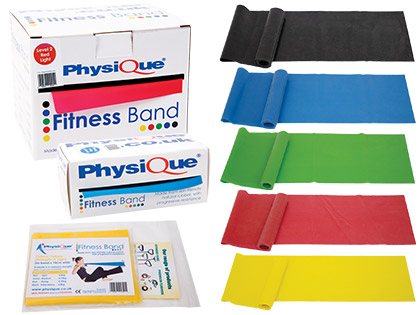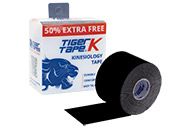Looking After Long-Term Postural Health as a Manual Therapist
As a massage therapist, you may find lower back pain due to prolonged sitting and poor posture is a common issue among your clients. But this can also be a complaint that’s often shared by massage therapists themselves due to repeatedly bending forward/over patients during treatments.
We have collaborated with The Sports Massage Association on this useful guide to help massage therapists look after their own workplace posture, as well as those of their clients, with a focus on how proper workplace stools and furniture can help.
It will cover:
- Looking after your own posture with suitable workplace furniture
- How good workplace furniture and products can help your client’s posture
- Exercise and stretching tips
It is worth noting that the below is for guidance, if you have an injury or niggle, you should always see a medical professional to address it.

Looking after your own posture with good workplace furniture.
As a massage therapist, taking care of your own postural health is important primarily for looking after your career longevity, but also to avoid any long-term spinal health issues that could affect your quality of life.
Workplace furniture that is more suited to your clinic environment can be instrumental in this goal.
A lot of the research into optimal stools for clinics with a view to improving posture, looks at the effects on dentists. However, their working setup and sitting position is similar enough to massage therapists working posture and allows for easy transfer of best practice.
Studies have found that using saddle stools in jobs where the worker is sat down with their spine curved forward, as a massage therapist would do while treating a client, can have a positive effect on their working posture.
This is because using a saddle stool when sitting, tilts the pelvis towards the front of the body, so the lumbar part of your spine forms the correct curve while working. This can then decrease spinal issues leading to lower back problems as discussed in Silva et al's paper on the effect of conventional chairs versus saddle-seat chairs.
The Physique Saddle Stool is not only comfortable, but helps to provide support to the spine, reducing joint and muscle pressure, making it perfect for sitting and standing up frequently when working throughout the day with clients.
While the Physique Saddle Stool is generally recommended by The SMA, we do have some other saddle stool options too:
The Physique Split Saddle Stool which, as the name suggests, has a split saddle design which can help you find your perfect sitting position when you work throughout the day with patients. It reduces pressure on the pelvic floor and helps to keep your spine in its natural shape and curve.
Like other saddle stools, the Deluxe Saddle Chair also has an ergonomic design promoting positive posture by encouraging pelvic tilt. However, it also comes with optional accessories and is available in 15 different colours to better match your clinic’s interior.
Treatment Couches that can be adjusted to raise or lower their height are also a good option for allowing a more correct and comfortable posture while working, as they will reduce the degree to which you need to bend forward while treating clients.
This video by Liam Coffey from Muscle Doctor also gives some great tips for improving workplace posture as a massage therapist, with a view to aiding longevity in your career:
How good workplace furniture and products can help your clients.
While the above guidance is aimed towards massage therapists themselves, the same principles and advice on workplace seating can be applied to your clients who may also have issues with back pain due to spending extended periods sitting at work.
According to a study by Pynt et al, there are two ways to tackle poor workplace posture with your clients. First, for those who already have issues related to poor posture, it’s important to advise them on how to fix these problems. But it’s also worth talking to clients who don’t currently show any signs of issues but spend a lot of time sitting at work—they should be advised on proper workplace posture to prevent any future problems. In essence, addressing posture is crucial for everyone, whether they’re already experiencing issues or might be at risk down the line.
The same study also states that optimising chair use is essential for addressing back pain in workers who spend a lot of time seated. So, focusing on how they use their chairs can be a key part of helping them avoid or alleviate back pain.
While not the normal choice for office chairs, saddle stools could also be helpful to your clients who spend a good deal of their time sitting because of their job, even if they are not manual therapists themselves.
Using a saddle stool in an office environment instead of a conventional office chair, could have the same posture correction benefits to someone working at a computer as it does for manual therapists who work bent over clients.
Standing desks have gained popularity in recent years as a way of freeing office workers to get up out of their desk chairs without disrupting their work. There are pros and cons to standing desks, but your clients may find them to be a good alternative to normal desks, which could help alleviate lower back pain by changing their posture.
There are other products that your clients could use to improve posture or ease tension in their lower back when sitting at work.
Placing something under the worker’s feet like a yoga brick could help them maintain better posture. Although slightly unconventional, using a soft over ball that’s partially inflated could help support the lower back while sitting in a chair. There are also heat packs to help loosen any tight muscles that could be causing discomfort.
Exercise and Stretching Tips:
In addition to ensuring you have the right therapy stool for giving treatments, it’s a good idea for both you and your clients to take a few moments during breaks or between sessions to perform quick stretches or exercises. These can help relieve stiffness, refresh the spine, and promote better overall posture and comfort.
Below are some simple exercises that can be easily completed in a workplace or clinic setting. Take care if trying these exercises. If something doesn’t feel right, stop and seek medical advice.
Bruegger’s Posture Exercise:
The Bruegger Posture Exercise aims to reverse the discomfort you may find from sitting with your shoulders rounded forward. It is completed sitting down so is great for a workplace situation.
Sit at the edge of a chair with your legs slightly apart, keep your spine and head tall, arching your back slightly. With your arms by your side and slightly away from your body, palms facing forward, move your shoulder blades back and down towards each other, hold, then move them back to their original position. Repeat 5 times.
You could add a resistance band to this exercise to increase stretch by winding it round your hands before pushing your arms back.

Plank Pose:
The plank pose is a yoga exercise which is great for strengthening core muscle groups as well as promoting proper alignment in your spine. All of which can help with easing or avoiding lower back pain.
Start on your hands and knees with your shoulders and knees in line with your hips. Straighten your legs behind you with the balls of your feet on the floor, heels lifted and your body in a straight line. Either rest on your hands with your arms straight, or lower down to your elbows. Open your chest with shoulders back, engaging your arms, legs and core muscles, hold the pose for 30-60 seconds (or as long as you can manage) then gently lower down.
Once you’ve had some practice you could, carefully, add a gym ball into the mix to increase the challenge by adding an unstable surface to move.

Glute Bridges:
Glute Bridge exercises are good for activation of the glute and core muscles, which in turn can help decrease pain in the lower back and hip.
Lie on your back, knees bent, feet flat on the floor hip width apart. Your arms should be by your side palms down to help with balance. Lift your hips upwards by squeezing your bottom muscles together and engaging your core muscles. Your bottom and lower back should rise up, being careful not to over arch your back. Hold, then lower back down and repeat.
You could use a mini band looped around your thighs just above your knees to add extra resistance to the movements.

Sources and References:
Silva, V., Fonseca, P., Pinho, M., Góis, J., Vaz, M., & Reis-Campos, J. (2017). Biomechanical Study of Dentists’ Posture When Using A Conventional Chair Versus A Saddle-Seat Chair. SPMED. Available at: [https://administracao.spemd.pt/app/assets/imagens/files_img/1_19_59275add04620.pdf]
Pynt, J., Higgs, J., & Mackey, M. (2001). Seeking the Optimal Posture of The Seated Lumbar Spine. Physiotherapy Theory and Practice, 17(1), 5–21. Available at: [https://doi.org/10.1080/09593980151143228]
































Did you find this article useful?
Why not share this with a colleague, patient or friend?